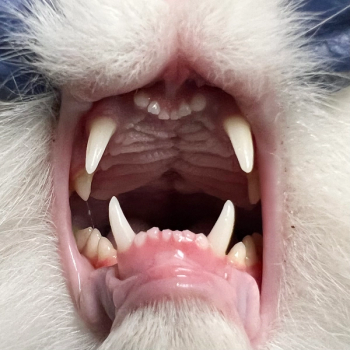
Surgery STAT: Using active drains in wound management
The use of active drains enhances the efficiency and minimizes the morbidity of wound drainage. Their use is indicated for removal of pre-existing fluid, ablation of dead space and prevention of anticipated fluid accumulation.
The use of active drains enhances the efficiency and minimizes the morbidity of wound drainage. Their use is indicated for removal of pre-existing fluid, ablation of dead space and prevention of anticipated fluid accumulation.
Drain placement is not benign. Drains are foreign implants and, depending on their material, may incite an inflammatory response. The drain and its exit point provide a direct conduit from the environment to the wound that poses a risk for infection.
Active drains are connected to a suction system via tubing. For most commercial wound drains, the active system is a compressible reservoir held at negative pressure (Photo 1). Reusable reservoirs have a one-way valve to prevent reflux and can be emptied without disconnecting from the egress tubing (Photo 2). Other systems require replacement of the reservoir when full. Most systems are completely closed, with no venting to the environment.
Photo 1: A Jackson-Pratt® silicone wound drain with reservoir.
Photo 2: The reservoir has a one-way valve that allows emptying and reconstitution of negative pressure.
Silicone wound drains are most common and the least reactive. Active drains are flat or ovoid with multiple fenestrations. Some are impregnated with heparin to reduce fibrin clots. Active drains create a non-gravity-dependent gradient by applying negative pressure at the egress port. This allows considerable flexibility in exit point placement and is one of the main advantages of using active wound drainage (Photo 3).
Photo 3: Placement of an active wound drain on the antebrachium of the dog. Note there is one exit point, placed proximally to facilitate management and reduce the likelihood of contamination from the feet and ground. The drain exit point would be covered, in this case incorporating the entire leg, and the reservoir could be secured between the shoulders.
Other benefits of closed active drainage are that drainage volume can be quantified and the gross nature and cytologic appearance of the fluid can be assessed. Constant negative pressure facilitates maintenance of drain patency and effectively ablates dead space without the need for compressive bandaging.
Commercial drains are available in various sizes and configurations and are economical (as low as $10). Alternately, small active drains can be fashioned from butterfly catheters and vacutainers (Photo 4). The port of the butterfly catheter is removed and small fenestrations (<1/3 diameter) are made in the tubing. These drains are effective for small wounds and allow easy replacement of the vacutainer.
Photo 4: Small active drains can be fashioned using a butterfly catheter (port removed; small fenestrations cut) and a vacutainer.
The small-diameter tubing does require frequent replacement of the vacutainer. Large active drains can be fashioned from larger-diameter tubing (intravenous fluid tubing) and syringes. The drain is placed and negative pressure applied through the syringe with the plunger held in place with a needle (Photo 5).
Photo 5: A larger active drain fashioned from intravenous tubing and a syringe.
Principles of drain placement and management include:
- There should be aseptic preparation of the wound and drain exit point.
- The drain should not exit or lie directly under the primary incision.
- Only one exit point should be used.
- The wound must be closed and the exit point constricted by a purse string to achieve negative pressure within the wound and the drain secured using a Chinese finger trap (Photo 3).
- The exit point is located some distance from easily contaminated areas.
- The exit point should be covered by a sterile bandage.
- The collection system should be emptied frequently to ensure constant, effective negative pressure.
- Change the collection system at regular intervals. Initial drainage may simply remove air from the wound, and fluid drainage may not occur until several reservoir changes.
- Drainage is rarely needed beyond 72 to 96 hours. The decision to remove a drain depends on the indication for the drain, and changes in the volume and nature of the fluid. All drains will incite some inflammatory reaction and subsequent fluid production (approximately 1ml/kg/day).
- Removing pre-existing fluid such as a seroma may require as little as 24 hours. A substantial change in volume and a change to a serosanguineous nature are indications for removal.
- Ablating dead space and promoting adhesion of tissue layers may take longer. There may be minimal drainage, but active suction is required to maintain ablation of the dead space.
- Culturing the tip of the drain after removal is not routinely necessary but may be indicated if there was a change in the wound or fluid appearance.
- Periodic cytology of fluid allows monitoring of the inflammatory and microbial status of the wound.
Dr. Giselle Hosgood is a certified surgeon through the American College of Veterinary Surgeons (ACVS) and the Australian College of Veterinary Scientists. She has a clinical interest in soft-tissue surgery, particularly wound management and reconstruction, and has published extensively in scientific and clinical literature. She is professor and chief of companion-animal surgery at Louisiana State University and associate editor of Veterinary Surgery.
Newsletter
From exam room tips to practice management insights, get trusted veterinary news delivered straight to your inbox—subscribe to dvm360.






